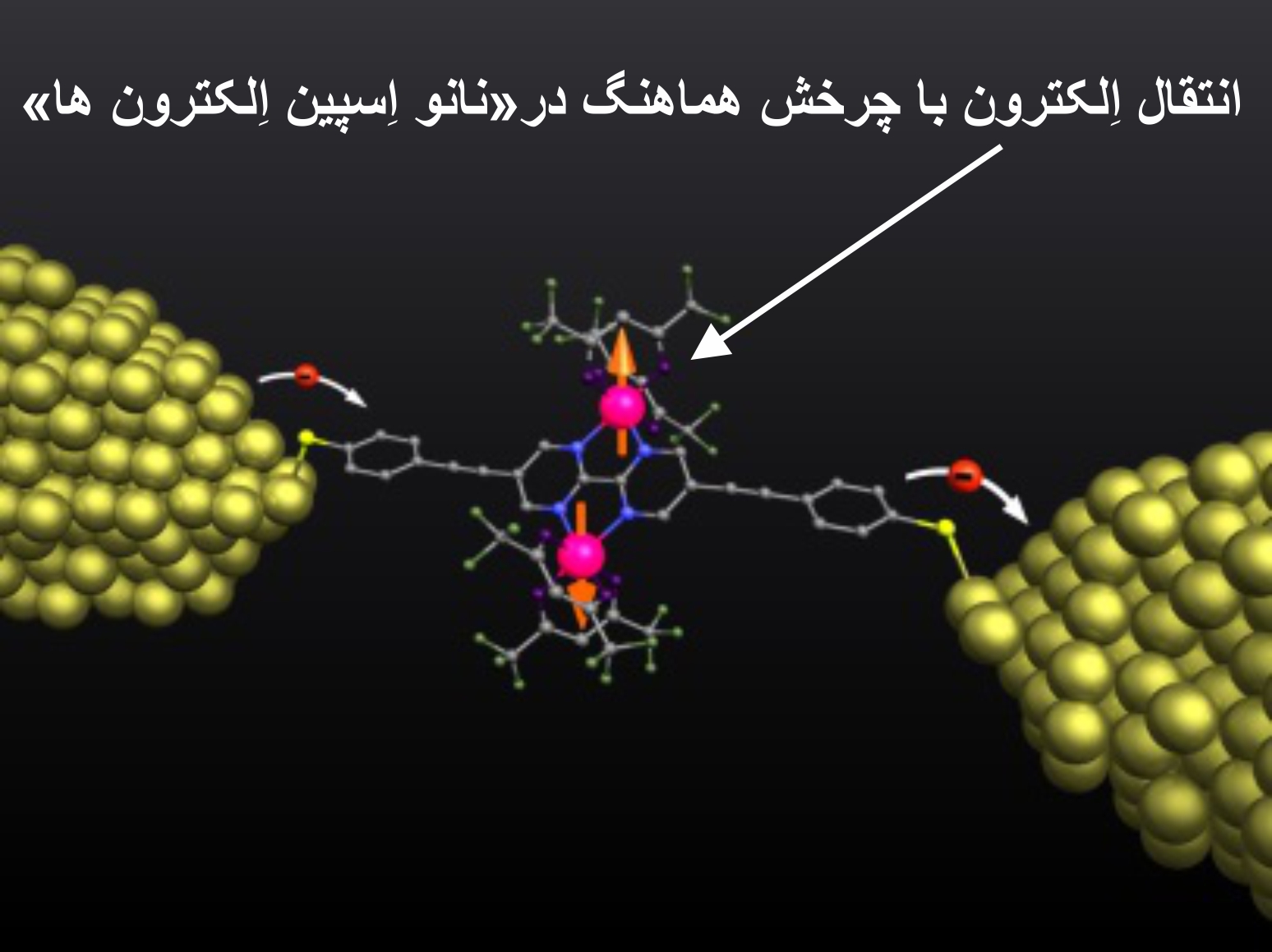Section "Nanospin Electrons" - Nanoelectronics
Electron transfer properties with coordinated spin in "Nanospin Electrons"
Researcher and author: Dr. ( Afshin Rashid)
Note: Graphene , which is an excellent electrical conductor, also has excellent spintronic properties. The ultra-thin carbon lattice is capable of transporting electrons with coordinated spin over longer distances and spinning for longer periods of time than any other known material at room temperature. Although the distance is still on the scale of a few micrometers and the time is still measured in nanoseconds, it essentially opens up the possibility of using rotation in microelectronic components.
Graphene is the name of a honeycomb sheet of carbon atoms with the thickness of an atom. It is the building block of other graphitic materials (since the diameter of a typical carbon atom is about 0.33 nm, there are about 3 million layers of graphene in 1 mm of graphite). Graphene units are known as nanographene. These are tailored to specific functions and thus their manufacturing process is more complicated than general graphene. Nanographene is made by selectively removing hydrogen atoms from organic carbon and hydrogen molecules, this process is called dehydrogenation. It is harder than diamond and at the same time more elastic than rubber. It is harder than steel and lighter than aluminum. Graphene is the strongest material known. Graphene has another surprising property: its high electron mobility is 100 times faster than that of silicon. It conducts heat 2 times better than diamond. Its electrical conductivity is 13 times better than copper. It absorbs only 2.3% of the reflected light. It is impermeable so that even the smallest atom (helium) cannot pass through a single-layer graphene sheet without defects.
Graphene transistor is highly conductive in circuit and thus ideal for electronic applications. However, its very high conductivity can also be a problem, because devices made of this material maintain their conductivity even when turned off. Graphene transistor, which contains layers of boron nitride or molybdenum disulfide placed between graphene sheets, in the structure of the transistor, these layers act as vertical tunneling barriers and minimize current leakage even at room temperature .Electronic circuits, when in the off state, should not consume electricity; But devices made of graphene continue to deliver even in the best off state. This characteristic not only causes power loss, but also means that these devices cannot be used in sensitive electronic circuits, because the electric current passing through the graphene ends melts the chips almost instantly. From the circuit point of view, the hbcn transistor is a three-pin element that can be adjusted by applying a signal to one of its pins, the amount of current passing through the other two pins. For the proper functioning of the graphene transistor in the circuit, it must be provided with the necessary currents and voltages by other elements such as resistors, or in other words, it should be biased.These transistors are used to amplify low-amplitude voltage and current signals and are usually used in medium power amplifiers or for key circuits.
- Researcher and author: Dr. ( Afshin Rashid)
Specialized doctorate in nano-microelectronics



